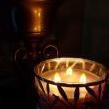
Mineral oil bad for leather? Or good? Or neutral?
By
SUP, in Dyes, Antiques, Stains, Glues, Waxes, Finishes and Conditioners.

By
SUP, in Dyes, Antiques, Stains, Glues, Waxes, Finishes and Conditioners.